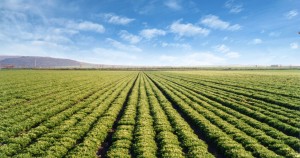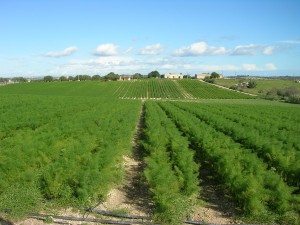 Given that it is difficult for most days of the year to preserve the organoleptic qualities of leafy vegetables, in general, for programs defined with each single commercial farm, Bellini s.r.l. coordinates a daily pick-up for the products. In the afternoon-evening of the previous day, the quantities of the various vegetables that must be picked the following morning are decided with each single producer, along with the methods of packaging. By 11:30am of the following morning, the vegetables are picked up and delivered.
Given that it is difficult for most days of the year to preserve the organoleptic qualities of leafy vegetables, in general, for programs defined with each single commercial farm, Bellini s.r.l. coordinates a daily pick-up for the products. In the afternoon-evening of the previous day, the quantities of the various vegetables that must be picked the following morning are decided with each single producer, along with the methods of packaging. By 11:30am of the following morning, the vegetables are picked up and delivered.
The picking and packaging program for vegetables is divided into two groups:
The 1st group includes vegetable crops that are generally more fragile and where too many processing and handling “steps” are not recommend (for example, certain types of lettuce: cappuccia, gentilina, romaine, canasta, or also cauliflower). The products that are picked during the coolest hours of the day are packed in packages chosen by Bellini s.r.l. and carried onto pallets at the corporate centre to be washed with potable water in special washing apparatus used in commercial farms. Bellini s.r.l. then delivers of picks up the products by 11:30am, in order to allow the product to cool in the warehouse cells.
The 2nd group includes products that require homogenous processing procedures in a specially equipped centre (ex. curly endive and escarole, fennel, radicchio). The unprocessed product is delivered daily in large crates or bins to the warehouses operating in the area of cultivation.
 For these types of vegetables, particular attention is given to maintaining the crispiness of the product that is picked from the field. In particular, for curly endive and escarole, a “tying” process for the product is mandatory in the field the last few days, so that the eatable part of the vegetable whitens and to further enhance crunchiness. The “white” portion of the vegetable must be more than 60% of the foliage.
For these types of vegetables, particular attention is given to maintaining the crispiness of the product that is picked from the field. In particular, for curly endive and escarole, a “tying” process for the product is mandatory in the field the last few days, so that the eatable part of the vegetable whitens and to further enhance crunchiness. The “white” portion of the vegetable must be more than 60% of the foliage.
Periodically and, however, at the beginning of each phase of production, pesticide residue analysis are carried out on homogeneous batches to ensure the absence of harmful substances. The analysis that needs to be performed is determined by the number of lots and the historical knowledge of the reliability of the commercial farm. In general, however, the principle of the square root of the number calculated of homogeneous lots is guaranteed.
The organization and the control and processing system of Bellini s.r.l. allow for “traceability of the product” in every stage of production and sales, also described and documented in the bill of sale.
The urgent need to identify the horticultural production starting from the field, follow the life cycle of its early stages of growth , while complying with the rules defined by Production Regulations, contributed in the selection of different commercial farms with the objective of identifying those that, equally sensitive to change and the evolution of new needs and guarantees of authenticity, would reorganize their production system in an entrepreneurial manner, in order to meet the changing needs of their clientele.
equally sensitive to change and the evolution of new needs and guarantees of authenticity, would reorganize their production system in an entrepreneurial manner, in order to meet the changing needs of their clientele.
With these specialized commercial farms that operate in the most important areas of national horticultural production, (Global Gap certification), the delivery program is planned with the Production Office for each single vegetable cultivated by defining weekly quantities to deliver so that the vegetables may be picked on a progressive delivery schedule throughout the year and especially with a continuous supply of vegetables that are always fresh and picked from the field just a few hours before.
Each commercial farm, adhering to the delivery schedule, agrees to comply with the Production Regulations and rules contained in these, furnishing documentation of the transaction that took place in the field and during the other phases that are the responsibility of those managing the farm. 
For the past several years, a series of agronomic techniques have been valued and implemented, which allow for the production of vegetables with a low chemical product impact: se of unified organic matter, mulches, hydraulic systems for soil, low pressure-under foliage irrigation and fertigation, selection of resistant varieties, and monitoring the environment, as well as the wash water.
The number of acres that farms cultivate may vary from area to area and especially in relation to the horticultural crop. For farms that grow leafy vegetables – lettuce, cabbage – in the area of Rovigo, the average size is 3.5-4 hectares. These are mostly family-run, with the addition of 2-3 external working units, and management also implies the harvest and packaging of the product in the field (on average, these farms yield 0.8/1 working units per hectare). Of the total surface area, about 15% is covered by greenhouses or tunnels.
 The size of the commercial farms that grow other vegetables – curly endive and escarole, fennel, radicchio, celery, cabbage, Savoy cabbage – which are then processed in warehouses set up throughout the territory by Bellini s.r.l., are more in the range of 15-20 hectares. The farms are responsible for producing the vegetable and delivering it unprocessed on a daily basis in large crates or bins. Generally, they are equipped with mechanical equipment that facilitates transplant and picking of the vegetable.
The size of the commercial farms that grow other vegetables – curly endive and escarole, fennel, radicchio, celery, cabbage, Savoy cabbage – which are then processed in warehouses set up throughout the territory by Bellini s.r.l., are more in the range of 15-20 hectares. The farms are responsible for producing the vegetable and delivering it unprocessed on a daily basis in large crates or bins. Generally, they are equipped with mechanical equipment that facilitates transplant and picking of the vegetable.